With the recent Salesforce releases, Omnistudio has been upgraded with a new look and more features. Adding text translations to Omnistudio components become more easy and powerful. In this article, I’ll walk you through the steps to add translations to your OmniScript.
1. First enable Translation workbeanch and add languages that you are going to use.
Go to Setup → Translation Workbench → Translation Language Settings
Make sure all the required languages are enabled

2. Enable multi-languages support for Omniscript
Go to Setup -> Object Manager -> Omni Process -> Field & Relationship
Select Language field
If ‘Multi-Language’ option is not there, click New button and add the option

3. Create your Omniscript
From App Launcher, select Omniscript
Click ‘New’
Enter a Name/Type/Sub Type and make sure to select Language as ‘Multi-Language’

4. Add components to your Omniscript. After you create your omniscript with all the components, it’s time to add language translations. To do this click the pencil icon at the top-middle area next to ‘Multi-Language’

5. A popup appears which contains all the components that you can add translations as seen below.

6. Select the desired components. You are going to add translations for them.
In front of the ‘label’, click the pencil icon. Then you can add API name for your component. Make sure you add the component name without having spaces in between (like camalCase, PascalCase so on) or else your label might not be saved. This will be the name of the custom label which is going to be create for this component. Then add the relevant Text in the next input box.
![]()
7. After creating all the language components, you can click the button at the bottom-right, ‘Save as English (US)’. This button name will be changed as per your base language. I prefer to create all the labels in English and then add translations later.
After that, click again the same icon at the top-middle area next to ‘Multi-Language’. You will see the same screen. In this screen click the gear icon at the top-middle and select the language that you want to add translations.

8. Add your translations in the required fields.
Hint: if you already have some Salesforce custom labels in your Salesforce org which suit for these components, you can add their API names. After adding all the translations click the ‘Save as Dutch’ (or the language you use) button at the bottom-right.

9. So it is done. You can preview your changes by clicking the ‘Preview’ button and there you can change the languages and validate your translations.

So it is simple but powerful than ever to create language translations for your omniscript components. Here are a few points I observed which will be useful with your development.
- You can use existing custom labels by providing their API names at the translation screen.
- After you create translations, you can modify their values directly at the Salesforce custom labels section.
- If you use TextBlock components, there is a possibility of not displaying the contents you enter at the rich text editor. In that case, enter your contents in to a custom label as an html content. Then at the textblock properties, select ‘Edit as JSON’ option and provide your custom label name to the ‘textKey’ attribute. The same can be done at the popup screen too if you can identify the component correctly.
![]()

Translating OmniStudio components is now simpler and more flexible than ever. With Salesforce’s enhanced multi-language support, you can efficiently build multilingual experiences all within the OmniStudio framework.
Author: Nermala Sarathchandra is a Salesforce Certified Application & System Architect and Tech Lead at CMS.
With 20+ years of experience in the software industry and 15x Salesforce certifications, Nermala is an annual presenter at YarlDreamin conference from its inception.
